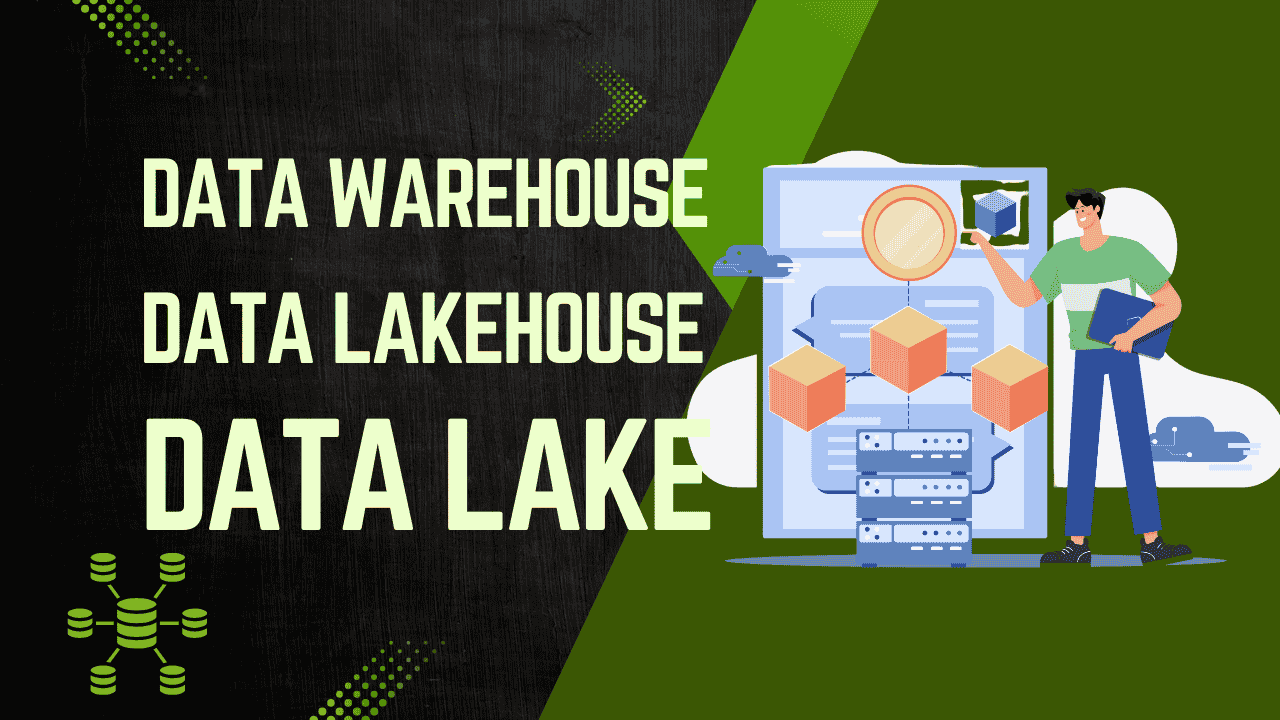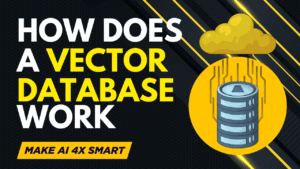Key Points:
- Data Warehouse: Best for structured data and business intelligence tasks like reporting, but it can be costly and less flexible for unstructured data.
- Data Lake: Ideal for storing large volumes of raw, diverse data types at a low cost, but may lack structure, potentially leading to slower performance.
- Data Lakehouse: Combines the strengths of both, offering flexibility for varied data and high performance for analytics, though it’s a newer concept with evolving tools.
- Choosing the right solution depends on your data types, analytical needs, budget, and technical expertise.
Data is the new oil In today’s digital age . Businesses generate vast amounts of information from databases, applications, social media, and more. Managing and analyzing this data effectively is key to making informed decisions and staying competitive. Three critical systems for modern data management are Data Warehouses, Data Lakes, and Data Lakehouses. Each serves a unique purpose, with distinct strengths and trade-offs. This article explains these concepts in simple terms, compares their key differences, and provides guidance on choosing the right one for your organization.
On This Page
Table of Contents
Introduction
Every organization, from small startups to global enterprises, collects data daily. This data could be sales figures, customer feedback, website logs, or even sensor readings from IoT devices. To turn this raw information into actionable insights, businesses rely on systems designed to store, process, and analyze data. The three main architectures are:
- Data Warehouse: A system that organizes structured data for fast reporting and business intelligence.
- Data Lake: A repository that stores raw, unprocessed data of all types for flexible analysis.
- Data Lakehouse: A hybrid solution combining the organization of a warehouse with the flexibility of a lake.
Choosing the right system depends on your data types, analytical goals, budget, and technical capabilities. This article breaks down each system, compares them across key aspects, and offers practical advice to help you decide.
What is a Data Warehouse?
A Data Warehouse, often called an Enterprise Data Warehouse (EDW), is a centralized system designed to store and analyze structured data for business intelligence (BI) tasks like reporting and decision-making. Think of it as a library where books (data) are neatly organized by category, making it easy to find and use information.
Definition and Purpose
“A Data Warehouse is a subject-oriented, integrated, time-variant, and non-volatile collection of data in support of management’s decision-making process.”
— Bill Inmon, Building the Data Warehouse
This definition highlights that a Data Warehouse focuses on specific business areas (e.g., sales or customers), integrates data from multiple sources, stores historical data for trend analysis, and keeps data stable once loaded. Its primary purpose is to provide a single source of truth for structured data, enabling fast queries and reports.
Key Characteristics
- Structured Data: Stores data in tables with predefined schemas, like spreadsheets.
- ETL Process: Uses Extract, Transform, Load (ETL) to prepare data before storage.
- Optimized for Queries: Designed for quick retrieval using SQL queries.
- Historical Data: Maintains past records for long-term analysis.
How It Works: The ETL Process
The ETL process is the backbone of a Data Warehouse:
- Extract: Data is pulled from sources like CRM systems, sales databases, or ERP software.
- Transform: Data is cleaned, standardized, and structured to fit the warehouse’s schema.
- Load: Transformed data is stored in the warehouse, ready for analysis.
This process ensures data is consistent and optimized for reporting.
Advantages
- High Performance: Fast query responses for complex analytics.
- Data Quality: Ensures accuracy through cleaning and standardization.
- Security: Robust access controls protect sensitive data.
- Historical Analysis: Supports trend analysis with historical records.
Limitations
- High Cost: Expensive to set up and maintain due to hardware, software, and expertise needs.
- Inflexibility: Fixed schemas make it hard to adapt to new data types or changes.
- Limited Data Types: Best suited for structured data, not unstructured data like videos or logs.
Real-World Example
Imagine a retail chain like Walmart using a Data Warehouse to analyze sales data. By consolidating sales figures, customer demographics, and inventory levels from all stores, the company can generate reports to identify top-selling products, optimize stock, and plan marketing campaigns. Tools like Amazon Redshift, Google BigQuery, or Snowflake are commonly used for such tasks.
Analogy
A Data Warehouse is like a library with books organized by genre, author, and title. You can quickly find a specific book because everything is cataloged, but adding a new type of media (like DVDs) requires reorganizing the shelves.
What is a Data Lake?
A Data Lake is a centralized repository that stores raw, unprocessed data in its native format, whether structured (like tables), semi-structured (like JSON files), or unstructured (like images or videos). It’s designed for flexibility and scalability, making it ideal for big data and advanced analytics.
Definition and Purpose
A Data Lake allows organizations to store vast amounts of data without predefined schemas, enabling data scientists and analysts to explore and process data as needed. It’s particularly useful for machine learning, real-time analytics, and big data projects where flexibility is key.
Key Characteristics
- Raw Data Storage: Stores data as-is, without transformation.
- Schema on Read: Structure is applied when data is accessed, not when stored.
- Scalability: Handles petabytes of data using cloud storage like Amazon S3 or Azure Data Lake Storage.
- Cost-Effective: Uses inexpensive object storage.
How It Works: The ELT Process
Unlike the ETL process, Data Lakes use Extract, Load, Transform (ELT):
- Extract: Data is pulled from sources like databases, logs, or social media.
- Load: Data is stored in its raw form in the lake.
- Transform: Data is processed or structured when needed for analysis.
This approach allows storing data first and deciding how to use it later.
Advantages
- Flexibility: Handles all data types, from spreadsheets to videos.
- Low Cost: Uses affordable cloud storage.
- Scalability: Easily grows with data volume.
- Advanced Analytics: Supports machine learning and big data processing.
Limitations
- Data Quality: Without governance, lakes can become “data swamps” with messy, unreliable data.
- Performance: Querying raw data can be slower than in a Data Warehouse.
- Complexity: Requires expertise in tools like Apache Spark or Hadoop.
Real-World Example
Netflix uses a Data Lake to store viewer data, such as watch history, ratings, and device logs. This raw data is analyzed to improve content recommendations and optimize streaming performance. Platforms like Amazon S3 or Google Cloud Storage are often used for Data Lakes.
Analogy
A Data Lake is like a natural lake where water from rivers, streams, and rain collects in its raw form. You can fish out what you need—whether for drinking, irrigation, or recreation—but you must process it first.
What is a Data Lakehouse?
A Data Lakehouse is a hybrid architecture that combines the best of Data Warehouses and Data Lakes. It offers the flexibility to store raw data like a lake and the structured querying capabilities of a warehouse, all in one platform.
Definition and Purpose
“A data lakehouse is a new, open data management architecture that combines the flexibility, cost-efficiency, and scale of data lakes with the data management and ACID transactions of data warehouses, enabling business intelligence (BI) and machine learning (ML) on all data.”
— Databricks
The Data Lakehouse aims to unify data storage and analytics, supporting both structured reporting and advanced analytics like machine learning on a single platform.
Key Characteristics
- Unified Platform: Handles both raw and processed data.
- ACID Transactions: Ensures reliable data operations (Atomicity, Consistency, Isolation, Durability).
- Schema Flexibility: Supports both predefined and on-read schemas.
- Metadata Management: Uses metadata to organize and govern data.
- Open Formats: Leverages technologies like Delta Lake, Apache Iceberg, or Apache Hudi.
How It Works
Data is ingested into the Data Lakehouse in its raw form, like a Data Lake. A metadata layer adds structure, enabling SQL queries and governance features. Technologies like Delta Lake provide transactional capabilities, allowing updates and deletes, which traditional Data Lakes lack.
Advantages
- Cost-Effective: Uses affordable object storage.
- Flexibility: Supports all data types.
- High Performance: Optimized for both SQL and machine learning workloads.
- Governance: Offers data quality and security features.
- Unified Analytics: Eliminates the need for separate systems.
Limitations
- Complexity: Requires understanding of new technologies.
- Maturity: As a newer concept, tools are still evolving.
- Integration: May need adjustments to fit existing workflows.
Real-World Example
GE Healthcare uses a Data Lakehouse built on AWS to manage IoT data from medical devices and enterprise data for real-time analytics and predictive maintenance. This unified platform supports both regulatory reporting and advanced analytics, reducing complexity.
Analogy
A Data Lakehouse is like a managed lake with designated areas for fishing, swimming, and boating. It combines the freedom of a natural lake with the organization of a park, making it versatile for various activities.
Key Differences Data Warehouse vs Data Lake vs Data Lakehouse
To choose the right system, understanding their differences is essential. The table below compares them across six key aspects:
| Aspect | Data Warehouse | Data Lake | Data Lakehouse |
|---|---|---|---|
| Purpose | Optimized for SQL analytics and reporting | Storing raw data for flexible analysis | Hybrid platform for SQL and advanced analytics |
| Data Structure | Structured data only | Structured, semi-structured, unstructured | Structured, semi-structured, unstructured |
| Storage Cost | High (structured storage and processing) | Low (object storage) | Low (object storage) |
| Performance | High for structured queries | Variable, often lower for complex queries | High for both structured and unstructured queries |
| Flexibility | Fixed schema (schema on write) | Flexible schema (schema on read) | Supports both schema on write and read |
| Scalability | Expensive and complex to scale | Easily scalable at low cost | Easily scalable at low cost |
Detailed Explanation
- Purpose:
- Data Warehouse: Focuses on business intelligence, such as generating sales reports or dashboards using SQL.
- Data Lake: Stores raw data for exploratory analysis, machine learning, or big data projects.
- Data Lakehouse: Supports both, enabling seamless BI and ML on the same platform.
- Data Structure:
- Data Warehouse: Requires structured data (e.g., tables with fixed columns).
- Data Lake: Accepts all data types, including unstructured (e.g., videos) and semi-structured (e.g., JSON).
- Data Lakehouse: Handles all data types with optional structure via metadata.
- Storage Cost:
- Data Warehouse: Expensive due to relational database systems and ETL processing.
- Data Lake and Data Lakehouse: Use cost-effective cloud storage like Amazon S3 or Azure Blob Storage.
- Performance:
- Data Warehouse: Fast for structured queries due to optimized schemas.
- Data Lake: Slower for complex queries unless optimized with tools like Apache Spark.
- Data Lakehouse: Balances high performance for both structured and unstructured data.
- Flexibility:
- Data Warehouse: Uses schema on write, requiring predefined structure before storage.
- Data Lake: Uses schema on read, applying structure during analysis.
- Data Lakehouse: Supports both, offering flexibility and control.
- Scalability:
- Data Warehouse: Scaling requires costly hardware or software upgrades.
- Data Lake and Data Lakehouse: Scale easily with cloud storage and distributed computing.
Choosing the Right Solution
Selecting the best system depends on your organization’s needs. Here are guidelines to help you decide:
When to Choose a Data Warehouse
- Use Case: You need fast, reliable reporting on structured data, like financial or sales reports.
- Example: A bank generating regulatory reports using structured transaction data.
- Tools: Amazon Redshift, Google BigQuery, Snowflake.
- Tip: Ensure robust ETL pipelines to maintain data quality and consistency.
When to Choose a Data Lake
- Use Case: You handle large volumes of unstructured or semi-structured data for machine learning or big data analytics.
- Example: A tech company analyzing user logs for behavior patterns.
- Tools: Amazon S3, Azure Data Lake Storage, Apache Hadoop.
- Tip: Implement governance policies to prevent data swamps and ensure data usability.
When to Choose a Data Lakehouse
- Use Case: You need a unified platform for both structured reporting and advanced analytics.
- Example: A healthcare provider analyzing patient records and IoT device data for both compliance and predictive analytics.
- Tools: Databricks Delta Lake, Apache Iceberg, Apache Hudi.
- Tip: Use open formats like Delta Lake to ensure interoperability and future-proof your architecture.
Decision Factors
- Data Types: Structured data favors Data Warehouses; diverse data types suit Data Lakes or Data Lakehouses.
- Analytics Needs: BI and reporting need Data Warehouses; machine learning needs Data Lakes or Data Lakehouses.
- Budget: Data Lakes and Data Lakehouses are more cost-effective for large datasets.
- Expertise: Data Lakehouses may require learning new tools like Delta Lake.
Many organizations use a combination of these systems. For example, a company might use a Data Warehouse for core reporting and a Data Lake for exploratory analytics, gradually transitioning to a Data Lakehouse for unification.
Conclusion
Data Warehouses, Data Lakes, and Data Lakehouses each play vital roles in modern data management. Data Warehouses excel in structured analytics, Data Lakes offer flexibility for raw data, and Data Lakehouses provide a unified solution for diverse workloads. By understanding their strengths and limitations, you can choose the system—or combination—that best aligns with your goals. As data volumes grow and analytics evolve, Data Lakehouses are gaining traction as a future-proof solution, but the right choice depends on your specific needs.
References
- Databricks: What is a Data Lakehouse?
- AWS: What is a Data Lake?
- Microsoft Azure: What is a Data Warehouse?
FAQs
What is the main difference between a Data Warehouse, Data Lake, and Data Lakehouse?
Data Warehouse: Think of it as a neatly organized library where only structured data (like spreadsheets) is stored in a specific format for fast reporting, such as sales summaries. It’s great for business reports but less flexible for other data types.
Data Lake: Imagine a big lake where all kinds of data—structured, unstructured (like videos), or semi-structured (like JSON files)—are dumped as-is. It’s flexible and cheap but can be messy and slower to query.
Data Lakehouse: This combines the best of both. It’s like a managed lake with organized sections, storing all data types while allowing fast queries and advanced analytics, like machine learning, on the same platform.
Why would I choose a Data Warehouse over the others?
You’d pick a Data Warehouse if you need quick, reliable reports from structured data, like financial records or customer sales. It’s designed for business intelligence tasks, such as creating dashboards or tracking performance metrics. For example, a retail store might use it to analyze daily sales across branches. However, it’s more expensive and less suited for unstructured data like social media posts.
When is a Data Lake the best choice?
A Data Lake is ideal when you’re dealing with large amounts of diverse data—structured, unstructured, or semi-structured—and want to store it cheaply for future analysis. It’s great for data scientists working on projects like machine learning models or analyzing website logs. For instance, a streaming service like Netflix might use a Data Lake to store viewer data for personalized recommendations. Just be careful—it can become disorganized without proper management.
What makes a Data Lakehouse special?
A Data Lakehouse blends the strengths of Data Warehouses and Data Lakes. It stores all types of data like a lake but adds organization and tools to make querying fast and reliable like a warehouse. It’s perfect if you want one system for both traditional reporting and advanced analytics, like predicting customer behavior. For example, a hospital might use a Data Lakehouse to handle patient records and medical device data for both compliance reports and predictive analytics.
Are Data Warehouses expensive to use?
Yes, Data Warehouses can be costly because they require structured data, which means extra work to clean and organize it before storage. They also use specialized systems that can be pricey to scale. In contrast, Data Lakes and Data Lakehouses use cheaper cloud storage, like Amazon S3, making them more budget-friendly for large datasets.
Can I store videos or images in a Data Warehouse?
Not easily. Data Warehouses are built for structured data, like tables with numbers or text. Storing unstructured data like videos or images is possible but inefficient and not their strength. Data Lakes and Data Lakehouses are better for handling unstructured data, such as media files, because they don’t require a fixed format.
What’s this “schema” thing I keep hearing about?
A schema is like a blueprint that defines how data is organized. In a Data Warehouse, you use schema on write, meaning you set the structure (like columns in a table) before storing data. In a Data Lake, it’s schema on read, so you store raw data and define its structure only when you use it. A Data Lakehouse supports both, giving you flexibility to choose based on your needs.
Which system is fastest for running queries?
Data Warehouses are typically the fastest for structured queries (like SQL reports) because data is pre-organized. Data Lakes can be slower since data is raw and unprocessed, requiring extra work to query. Data Lakehouses offer high performance close to Data Warehouses, even for diverse data, thanks to tools like metadata layers that add structure.
Do I need special skills to use these systems?
Data Warehouse: You need knowledge of SQL and ETL (Extract, Transform, Load) processes. It’s straightforward for business analysts but requires setup expertise.
Data Lake: Requires skills in tools like Apache Spark or Python for processing raw data, often used by data scientists.
Data Lakehouse: Needs familiarity with newer technologies like Delta Lake or Apache Iceberg, which can have a learning curve but are becoming more user-friendly.
Can I use more than one of these systems?
Absolutely! Many organizations use a mix. For example, a company might use a Data Warehouse for financial reporting and a Data Lake for analyzing customer reviews. Over time, they might shift to a Data Lakehouse to simplify their setup. It depends on your data needs and resources.
What happens if a Data Lake gets messy?
A poorly managed Data Lake can turn into a “data swamp,” where data is disorganized and hard to use. To avoid this, set up governance rules, like labeling data or using metadata to track it. Data Lakehouses help prevent this by adding structure and management features, making data easier to find and use.
Can you give a simple example of how these systems are used?
Data Warehouse: A supermarket chain uses a Data Warehouse to track daily sales and inventory, creating reports to decide which products to restock.
Data Lake: A gaming company stores player activity logs in a Data Lake to analyze trends and improve game features using machine learning.
Data Lakehouse: A car manufacturer uses a Data Lakehouse to store sensor data from vehicles and sales data, enabling both real-time monitoring and business reports.








